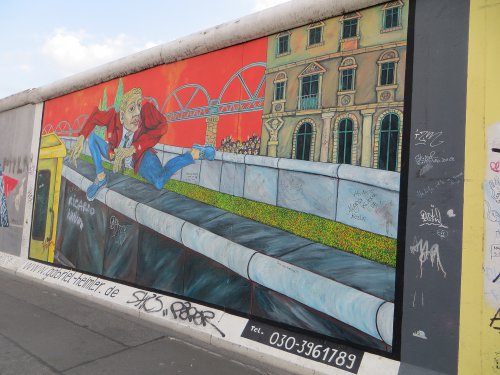Sights and Activities
Below are the places we saw and activities completed while visiting Germany:
Heidelberg
We spent a couple hours roaming this student town with its typical southern German houses and architecture. The Gothic-Renaissance castle built of red, sandstone above the old town gives the city a romantic appeal. The main plaza, Universitätsplatz, also contained some great 18th-century architecture.

Weinheim
We visited some friends in Weinheim that was a great surprise to see a typical German town. We visited two castles, churches, antique German wooden houses, and the market plaza. The castles were located just above the city with great views of the surrounding area. Strolling through the old town was very pleasant while we viewed the interesting designed houses with crisscrossed planks.

Munich
Heiliggeistkirche: we were pleasantly surprised to walk into this Gothic church and find it full of vines and trees that seemed to be taking over the walls and columns. The church was remodeled in 1724-30 by Johann Georg Ettenhofer and expanded in 1885 by Franz Lšwel.
St Peterskirche: we went inside St. Peter’s Church which is a Roman Catholic Church and the oldest church in the district.
Frauenkirche: this late-Gothic Church of Our Lady was built in the 16th-century.

Neues Rathaus: this Gothic building towers the main plaza, Marienplatz. We were able to catch the dancing glockenspiel on its clock tower.
Residenz Palace and Gardens: the huge palace housed Bavarian rulers from 1385 to 1918. We did not visit the interior, but walked around admiring the gardens and architecture.
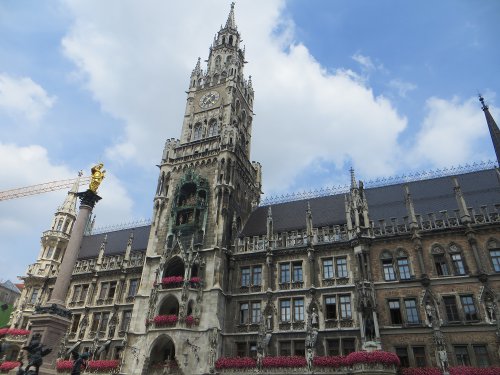
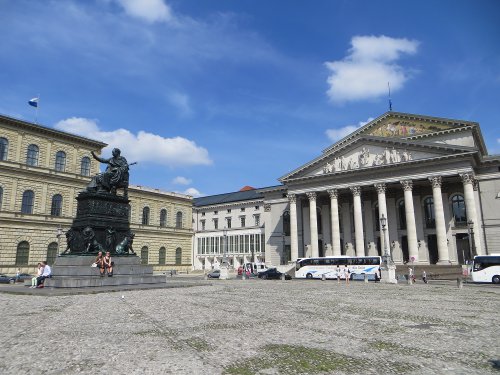
Englischer Garten: one of the largest city parks in Europe was full of people enjoying the sun, rafting down its river, and we even saw some people surfing a wave that builds up on the river.
Judisches Museum: the museum exhibited the past and present of Jewish life in Munich.
Olympia Park: constructed for the 1972 Summer Olympics and now a public park that houses the Olympic Stadium and Olympic Tower. We hiked up a hill within the park with great views of the city.

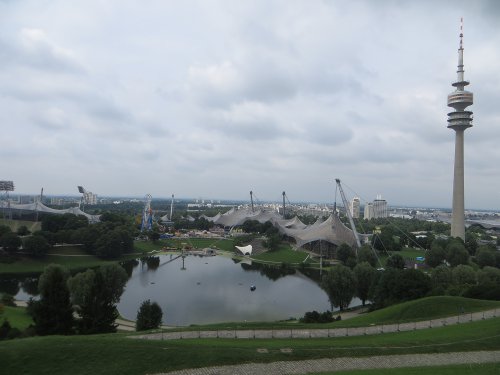
Berlin
WeisserSee: this Berlin neighborhood contains a small lake with the same name where we walked around the perimeter.
Brandenburg Gate: finished in 1791 as one of 18 city gates, it became an east–west crossing point after the Berlin Wall was built in 1961.
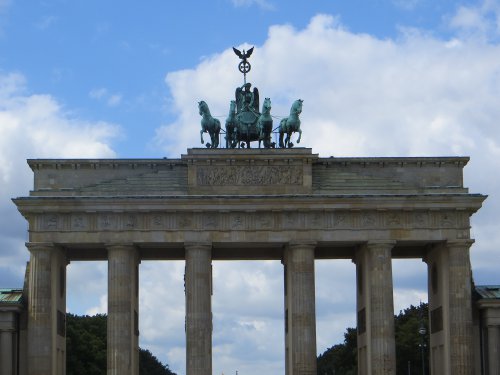
Holocaust Memorial: this grid of 2,711 ‘stelas’ or differently shaped concrete columns set over uneven floors are designed to produce an uneasy, confusing atmosphere. The intention of the designer was to give people a disorderly feeling and give them a small taste of what the Jewish community was going through during World War II. Also located under the memorial is an information center with additional information on the Holocaust.

Hitler’s Bunker: the Führerbunker, translated to “Leader’s bunker,” was a subterranean bunker complex constructed in two phases which were completed in 1936 and 1944. It was the last of the Führer Headquarters used by Adolf Hitler. Hitler took up residence in the Führerbunker on January 16, 1945 and it became the center of the Nazi regime until the last week of World War II. The underground complex remained largely undisturbed until 1988–89, when the reconstruction of that area of Berlin was excavated and the bunker destroyed. The site remained unmarked until 2006 and now the area above ground is a parking lot with a poster sign displaying a schematic of the bunker.
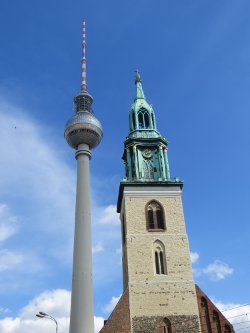
Berliner Dom: the Berlin cathedral is located on Museum Island and construction was finished in 1905.
TV Tower: we were able to view this tower from almost anywhere in the city center. The “Fernsehturm” was built in socialist times in 1969 and now has become a symbol of Berlin.
Hackescher Hofe: we wandered around this complex of shops and apartments around eight courtyards set in beautiful historical buildings.
Reichstag Building: we had great sunlight to view this glass-domed building. A fire here in 1933 allowed Hitler to blame the communists and grab power, while the Soviets raised their flag here in 1945 to signal Nazi Germany’s defeat. Today the building is once again the German seat of power.
Checkpoint Charlie: this was the name given by the Western Allies to the most popular Berlin Wall crossing point between East Berlin and West Berlin during the Cold War. Checkpoint Charlie became a symbol of the Cold War, representing the separation of East and West. The sign at the checkpoint, ‘You are now leaving the American sector,’ is still displayed.
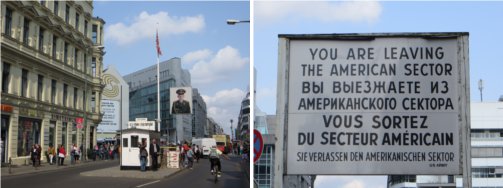
Haus am Checkpoint Charlie: this is a museum with exhibitions on successful and attempted escapes from East Berlin through tunnels, hot-air balloons, and even using a one-man submarine.
Topographie des Terrors: this museum is located on the site of buildings which during the Nazi regime from 1933 to 1945 were the headquarters of the Gestapo and the SS, the principal instruments of repression during the Nazi era. The exhibitions displayed the organization, strategy, and atrocities committed by the Nazi police.
Berliner Mauer Dokumentationszentrum: it was saddening to see this memorial containing a section of the original Berlin Wall and listen to eyewitness testimonies from both West and East Berlin.
East Side Gallery: the longest surviving stretch of the Berlin Wall has been converted into an outdoor, graffiti art gallery. Art varying from political, cynical, and comical was displayed on the wall.

